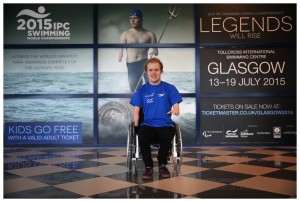By Karen Howells
Originally published in The Conversation on 24th July 2015
Assuming no last minute collapses in form or bone-breaking crashes, Chris Froome will ride along Champs-Élysées on Sunday as the winner of the 2015 Tour de France and the only British man in history to win the race twice. This was achieved in a Tour characterised by high speed crashes, the throwing of urine and abuse at Froome, reports of a data hack into his Sky team’s files to cast doubt on the legitimacy of his success, and a spectre of doping that refuses to leave the mountains.
Then of course, there is the small matter of 3,400km of bike racing against highly motivated rivals. Victory in this most brutal test of human endurance is within reach, but what explains why Froome chose to push his body so hard in pursuit of success?
Is he just that rare breed of cyclist who can excel on the flat, in the mountains, and in team and individual time trials? Or, is there something else more elusive that shapes a champion? The narratives that elite athletes construct and detail in their autobiographies are becoming an established source of data for scholars who seek access to the underlying identities of elite athletes to understand a champion mindset. Froome’s autobiography The Climb gives us useful look at how he has constructed his narrative.

Luke Ma, CC BY
Suffering
Froome depicts his passage from being a skinny kijana (youngster) racing his mentor in the Ngong Hills in Kenya to triumph in the 2013 Tour de France. His story comprises a number of intertwined narratives of which the most dominant is a performance narrative. The term, coined by Kitrina Douglas and David Carless, involves a single-minded dedication to sport, and the prioritization of winning above all else that might impact on the athlete’s mental well-being, identity, and self-worth. In addition to being dominant in Froome’s memoir it can be seen as the prevailing narrative in other autobiographies, such as that of Olympic champion Michael Phelps.
Froome’s performance narrative is framed by accounts of suffering. In fact, his repetitive use of the word reminds the reader that suffering, particularly on his bike, is what characterises his life. His Kenyan birthplace is known for its world class runners but has had little success in cycling. What it also has is mountains, and it is in these mountains that Froome developed his highly focused resilience. As onlookers we have seen his single-minded motivation, against the odds, towards becoming a multiple Tour winner. His resilience is evident in the face of pretty much relentless doping insinuations in the French press and particularly through social media, as well as in his response to urine being thrown at him, and in the searing conditions of the Tour.
It is in the mountains though where we get to see Froome’s solace in suffering. And perhaps it has been no better demonstrated this year than in the mountain finish at La Pierre-Saint-Martin when Froome attacked to gain more than a minute on all of his main rivals.
Quest questions
We all experience adversity, and champions are no different, but perhaps it is their response to the distress and disappointment that provides the transformational processes that motivate them beyond mere coping. This is apparent in many sporting autobiographies such as in the memoirs of Olympic swimming champions, Amanda Beard and Ian Thorpe, where adversity and the positive outcomes, framed as “adversarial growth”, are central.
These accounts tend towards a more quest-focused narrative which involve the confrontation of adversity, seeking of meaning, an explicit drive to gain something positive from the adversity, and a rejection of the performance narrative. Froome’s story involves adversity and despite the lows he achieved ultimate success. Froome recounts harsh school conditions, illness (bilharzia), his mother’s death in 2008 while he was riding in Spain, and the frustrations of 2012 when he was assigned the role of domestique for Bradley Wiggins, nurturing his team leader through the stages to Paris (with only the odd false step).
Adversity was also evident in the build up to this second victory; a broken wrist in the 2014 Tour meant a stage five withdrawal and no replay of his 2013 glory. Unlike Beard and Thorpe though, Froome has never rejected the performance narrative, even if in modern cycling it contains its own dangers.
It may be the primary device explaining Froome’s drive, motivation, and sacrifice for cycling, but there is a limit to the pervasive script of this narrative. Froome has consistently attempted to draw a definitive red line as to the limit of his performance. His team this week was forced to reveal power data which claimed to show estimates put forward by an expert were massive overestimates. In a sport damaged by the admissions of Lance Armstrong, it is a curious by-product that Froome and Team Sky are as eager to shout about both the normality and exceptionality of his performance.
As Froome prepares to ride the remaining mountains on his road to Paris, we will be watching to see if that performance narrative will continue to produce the effort, sacrifice, and team ethic required for this and future tour victories.
![]()
Karen Howells is Lecturer in Sport and Fitness at The Open University.
This article was originally published on The Conversation.
Read the original article.

